Half Dome is one of those undeniable classic American icons. It’s impressive, unique, and world-renowned for its “half” dome appearance. Located in Yosemite National Park in California, Half Dome sees thousands of people every year and remains one of the most photographed natural features in the park. Today, we are going to explore some of the most interesting tidbits about the Dome and bolster your trivia knowledge for your next night out at the bar. Here are our top 10 incredible facts about Half Dome in Yosemite!
1. Half Dome is a Quartz Monzonite Batholith
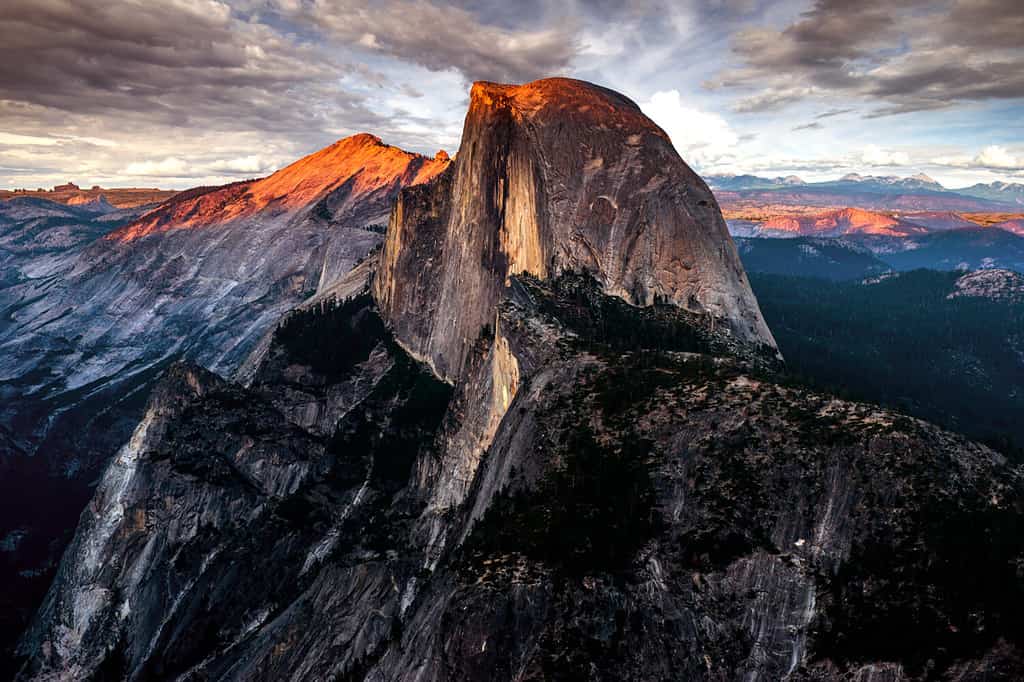
Half Dome is maybe the most iconic landscape element of Yosemite National Park.
©Pung/Shutterstock.com
That’s quite a mouthful! After reading that, you might be wondering what a quartz monzonite batholith is and how it relates to Half Dome. Well, a quartz monzonite is a type of intrusive igneous rock that has a roughly equal proportion of two kinds of feldspar minerals: orthoclase and plagioclase. A batholith is a large mass of that type of rock that forms from cooled magma deep in the Earth’s crust and covers a certain sized area.
The exposed surface of Half Dome actually consists of the side of a huge dome-shaped “pluton”, a smaller body of igneous rock within the batholith. The other half of the dome originated from glaciers and weathering over millions of years, leaving behind the spectacular sight we see today.
2. The Unique Shape Was Formed via Erosion
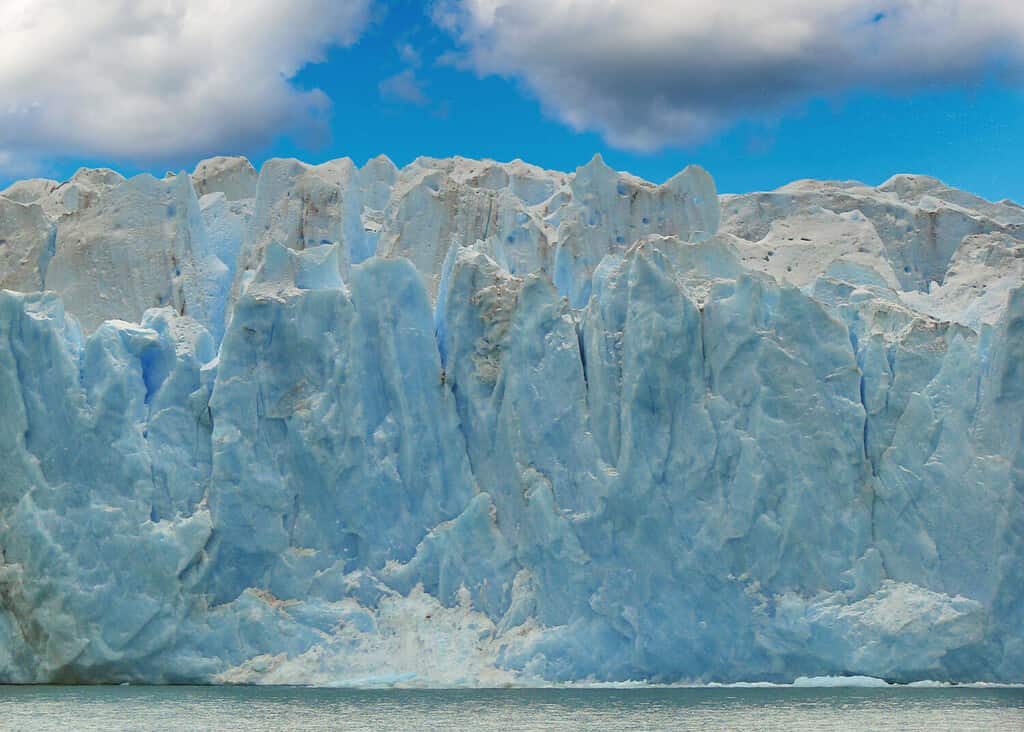
Glaciers helped shape Half Dome into the form it has today.
©eskystudio/Shutterstock.com
Speaking of erosion…
Half Dome may look like a perfect slice of rock, but it was not always that way. In fact, Half Dome was never a full dome to begin with. It was originally part of a larger mass of granite that formed out of molten rock underground. Over time, the granite was pushed into the air (something called uplift). The granite ended up cracking as it was pressed upwards, which let water and ice get inside and break slabs of rock off. This process, called exfoliation (like a lip scrub for rocks), gave Half Dome its rounded shape on three sides. The fourth side, however, was shaped by a different force: glaciers. During the Ice Age, glaciers carved out Yosemite Valley and scraped against the base of Half Dome. Finally, the glaciers plucked away chunks of rock from the already steep face, creating the sheer cliff we see today!
3. It Was Originally Named After a Native Woman
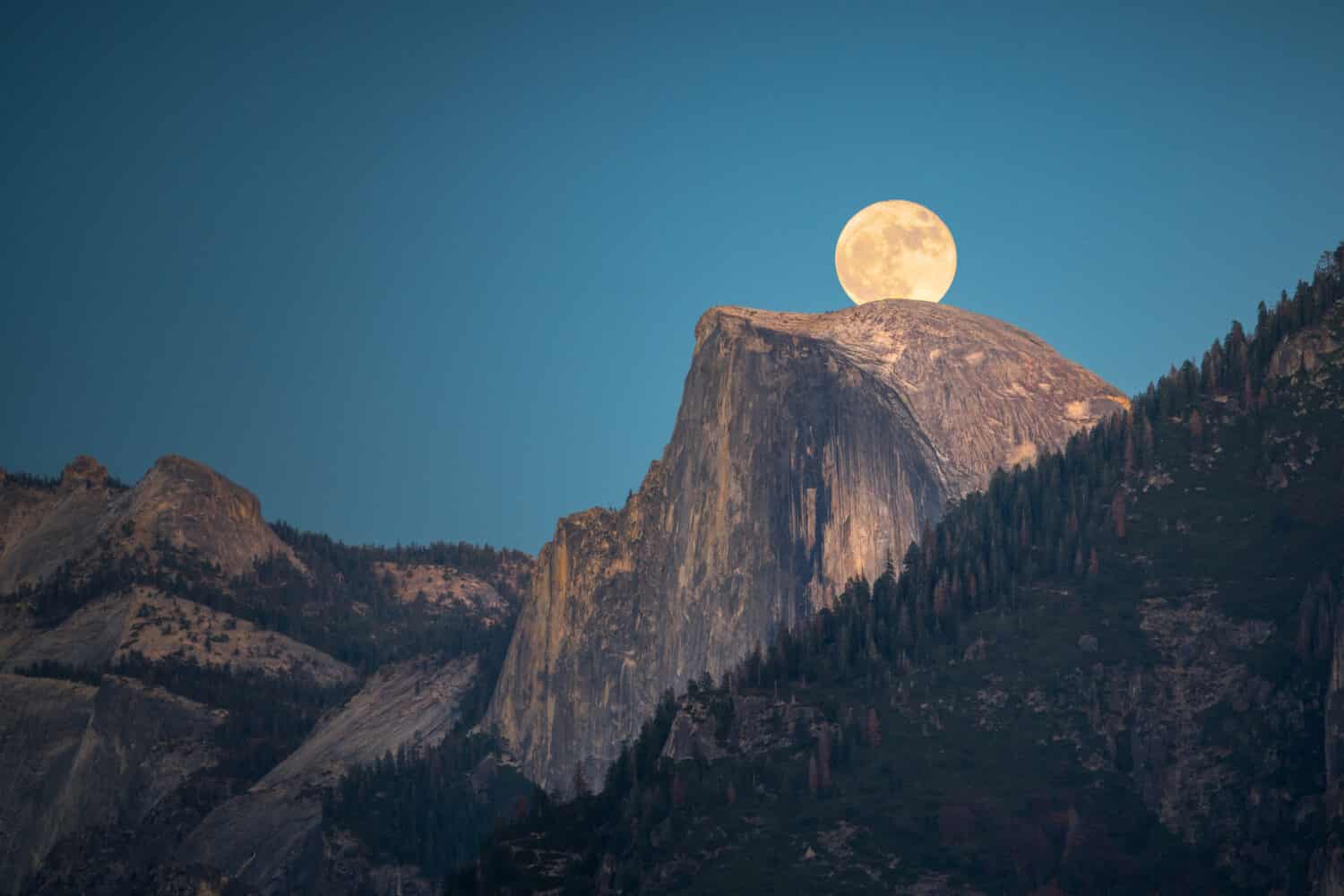
The Ahwahnechee phrase “Tis-sa-ack,” or “Cleft Rock,” was the original name for Half Dome.
©Phitha Tanpairoj/Shutterstock.com
Half Dome is a pretty no-nonsense name, but that’s not the structure’s original name. The Ahwahnechee, a native peoples group with roots in Yosemite Valley for up to 7,000 years, called it “Tesa’ak” or “Tis-sa-ack”, which means Cleft Rock. The name comes from a woman from the Mono tribe, who wore bobbed hair and short bangs (seems fashion always comes back around). According to their legend, an angry spirit turned Tisayac into the rock formation. Additionally, her tears formed Mirror Lake at the base of Half Dome. The dark streaks of moss on Half Dome’s face are said to be her tear stains.
4. Half Dome Was Summitted in 1875
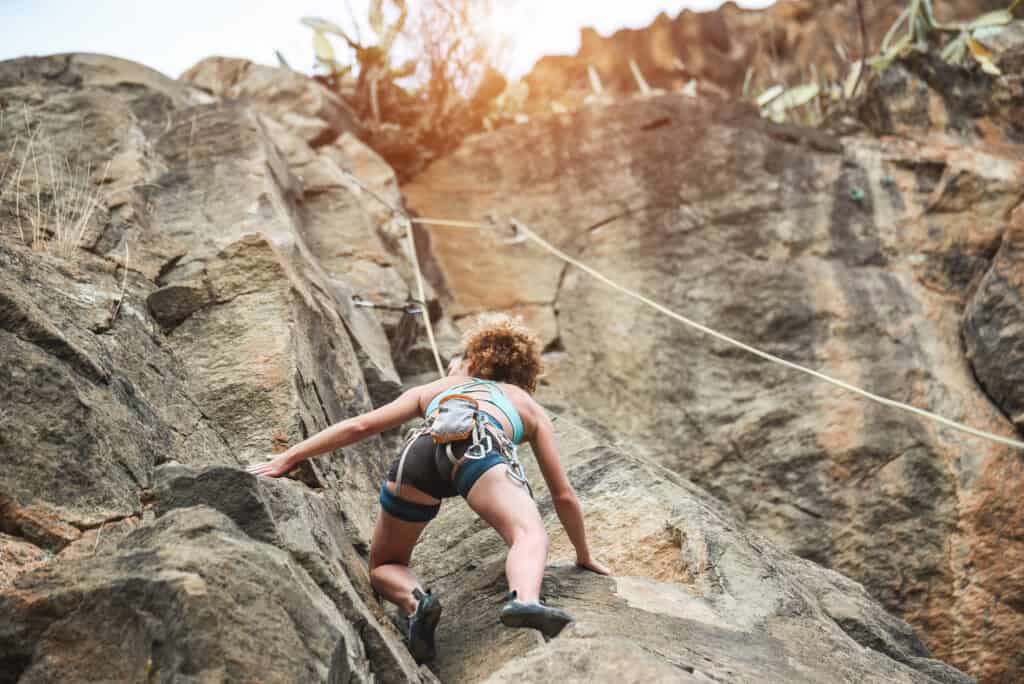
The first person to ever make it to the top of Half Dome was George G. Anderson.
©DisobeyArt/Shutterstock.com
Half Dome may seem like an impossible challenge to ever climb, but it happens! It was first conquered in 1875 by George G. Anderson. Anderson spent weeks drilling iron eye bolts into the granite of the northwest face, ultimately creating a ladder route to the top. He reached the summit on October 12, 1875, and planted an American flag there. His feat was considered a remarkable achievement at the time and inspired many other climbers to follow him. Anderson’s route is now known as the Cable Route. It’s the most popular way to ascend Half Dome today, although those old iron eye hooks are replaced!
5. A Famous Photographer’s Ashes Are on Half Dome

Ansel Adams had his ashes scattered on Half Dome in Yosemite.
©iStock.com/agaliza
Half Dome has inspired many photographers, but it’s pretty hard to top Ansel Adams when it comes to iconic American landscapes. Adams was one of the first to capture its beauty, and his photo of Half Dome is still an icon today. He devoted his life to preserving the environment, and places like Yosemite National Park were influential for him as a teenager. Adams took several photographs of Half Dome, but his most famous one was Monolith, the Face of Half Dome, taken in 1927 from a ledge called the Diving Board.
His final wish was to have his ashes scattered on Half Dome, the place that sparked his artistic vision and passion for nature. His family and friends did so in 1985.
6. There Was Once a Magma Chamber Within the Dome

The natural structure contains a solidified magma chamber.
©Oscity/Shutterstock.com
Half Dome is made of granodiorite, a rock that forms when magma cools deep underground. The magma was part of a huge body of molten rock called the Sierra Nevada Batholith, which covers most of Yosemite National Park. The magma chamber that created Half Dome was about 3-4 miles below the surface, and it took 93 million years to solidify, sort of like how the Earth has a molten core today.
7. Lightning Strikes Are Common (and Fatal)
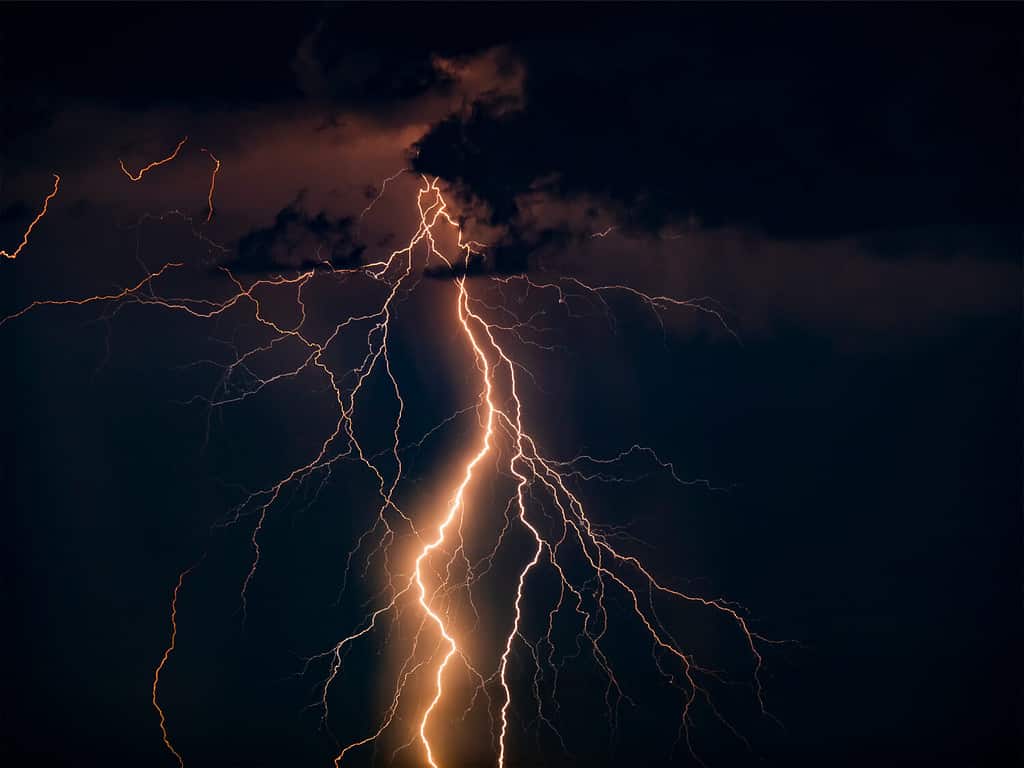
Half Dome commonly endures lightning strikes and has had several fatal accidents over the years.
©Azovsky/Shutterstock.com
Lightning doesn’t strike the same place twice, right? WRONG.
Lightning strikes the formation consistently every month of the year, posing a serious threat to hikers and climbers. Since 1919, the year of the cable installation, there have been seven fatal falls from the cables caused by lightning. The most recent one occurred on September 5, 2019, when a hiker was struck by lightning and fell. The National Park Service is clear that visitors should avoid Half Dome when there is any sign of a storm. If you see towering black clouds, maybe don’t hike the tallest thing in your immediate vicinity on metal cables.
8. The Hikable Route Up is 8.2 Miles Long
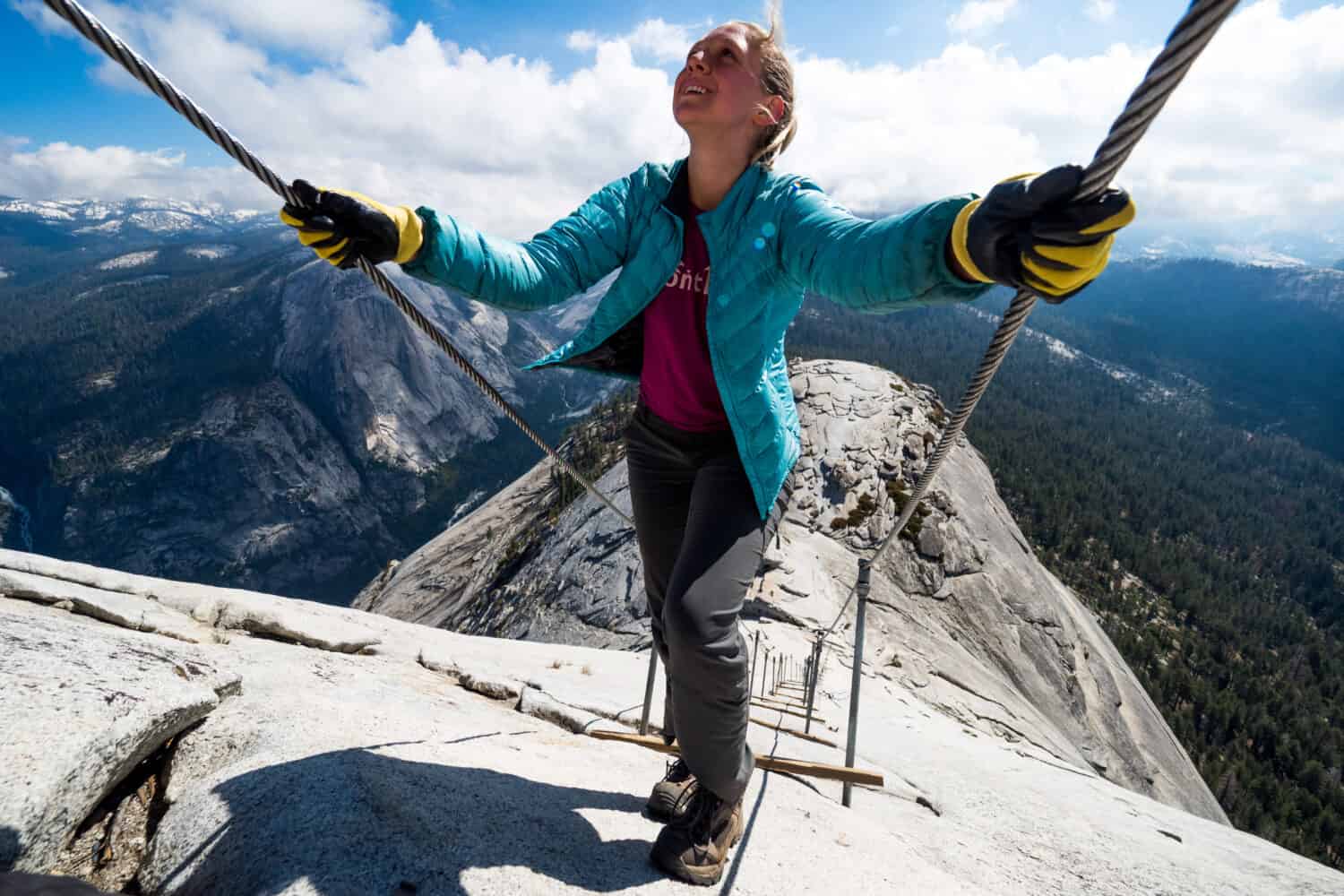
Two metal cables on Half Dome let hikers ascend 400 feet with ease and without rock climbing gear.
©Tyler Meester/Shutterstock.com
The most well-known part of the hike is the cable route. It’s about 400 feet long, with an average slope of 45 degrees, so get your calves ready. It starts at the base of the subdome, a staircase that leads to the shoulder of Half Dome. The subdome is tough by itself, let alone with a cable climb afterward. The cable route ends at the summit of Half Dome, but the view at the top is probably worth the insane climb it takes to get there.
The cable route is only a small fraction of the entire Half Dome hike, which runs from the valley floor to the top of the dome in 8.2 miles. The whole route has 4,800 feet of elevation gain and can take anywhere from 10 to 14 hours to complete, depending on your pace. Therefore, park officials recommend starting early in the morning. Moreover, you need a planned” turn-around time” in case you don’t reach the top by mid-afternoon.
9. People “Free Climb” Various Faces
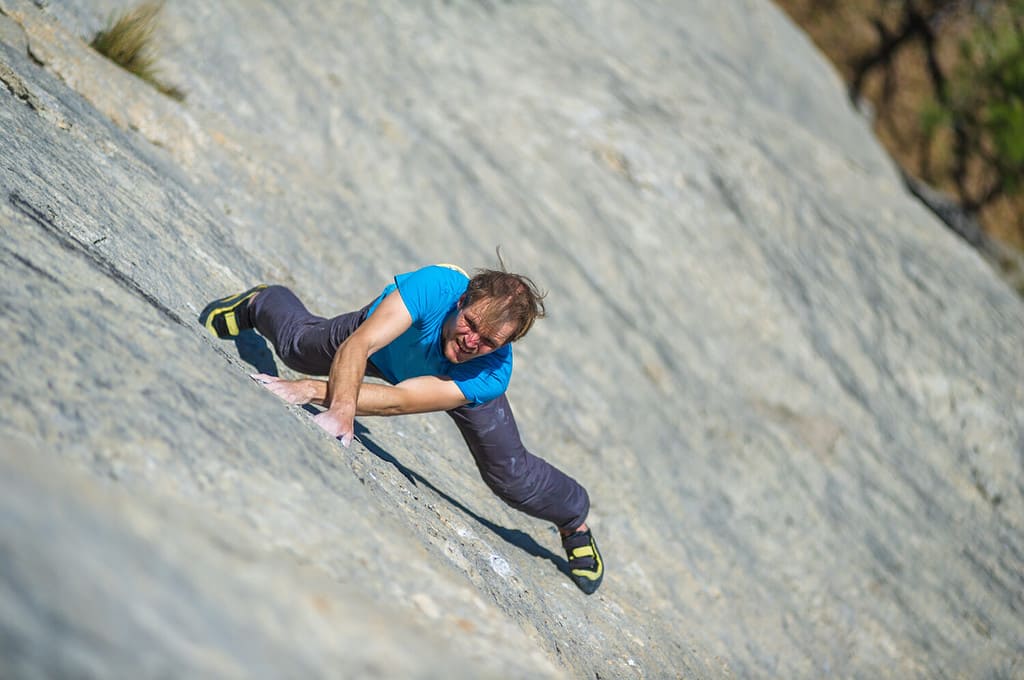
Free climbing a mountain means you climb without equipment.
©PedkoAnton/Shutterstock.com
A “free climb,” more popularly known as a “free solo,” is where you climb a mountain without safety ropes. If you fall, that’s pretty much a wrap. Some of the world’s best climbers have free soloed Half Dome’s faces. The most famous one is the Regular Northwest Face, which was first free-soloed by Alex Honnold in 2008. In addition, he free-soloed the South Face and the Tis-sa-ack route, the only climber to tackle all three faces.
10. The Best Time to Witness Waterfalls is Early Season
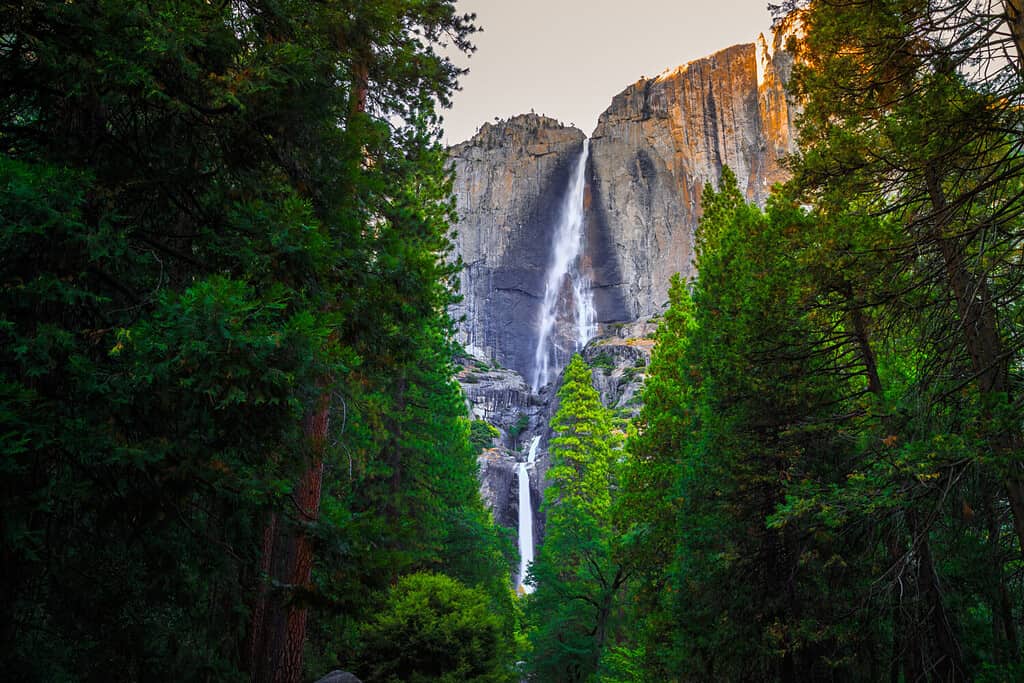
The summer snowmelt creates the best views of the waterfalls during the year.
©Beach Creatives/Shutterstock.com
Looking to get some incredible photos of a waterfall? The best time is going to be in May or June because the snowmelt is at its peak, and the waterfalls are at their fullest. Yosemite is known for its falls, including:
- Yosemite Falls, the tallest in North America
- Bridalveil Falls
- Vernal Falls
- Nevada Falls
The photo featured at the top of this post is © Pung/Shutterstock.com
Thank you for reading! Have some feedback for us? Contact the AZ Animals editorial team.







